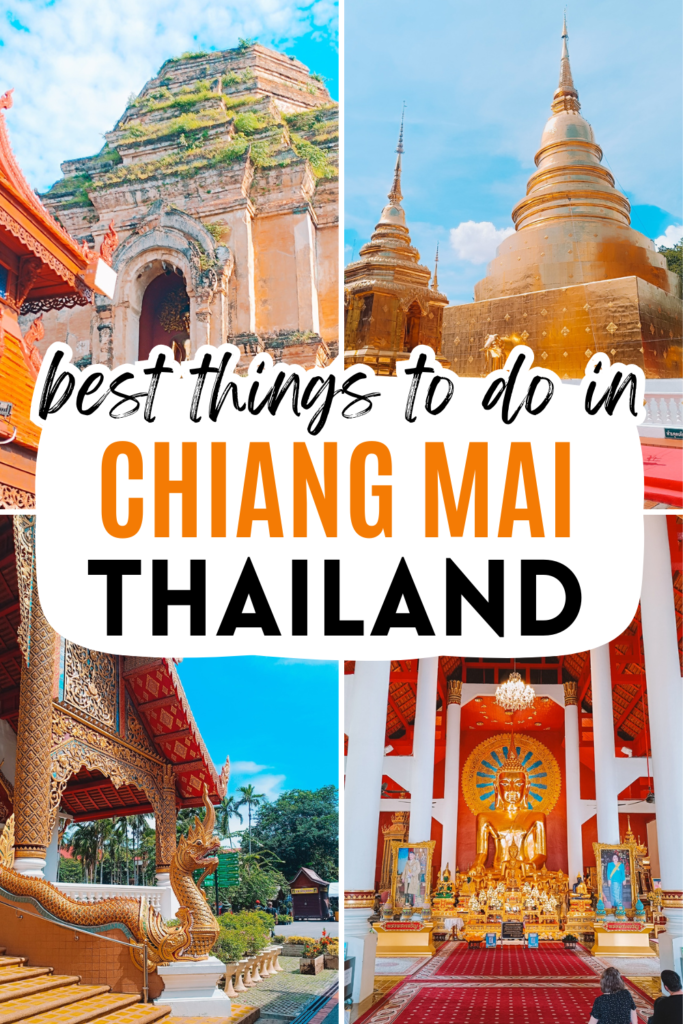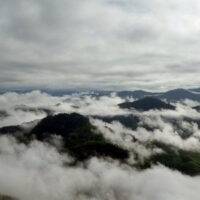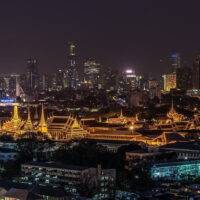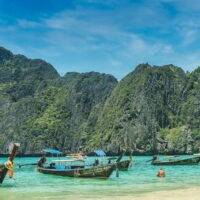3 Days in Chiang Mai: Itinerary and Travel Tips

Disclaimer: This post may contain affiliate links, which means that if you click on any of those links and make a purchase, I’ll get a small commission, at no cost to you, to help support this website.
Last Updated on June 13, 2025
Chiang Mai is often called the cultural capital of Thailand, and for good reason. Nestled in the mountains of northern Thailand, it offers a slower pace than Bangkok, with a charming mix of ancient temples, night markets, and lush green landscapes.
What makes Chiang Mai really special is the balance it strikes — you can spend your mornings exploring centuries-old temples inside the Old City, your afternoons hiking to waterfalls or visiting coffee farms in the hills, and your evenings eating khao soi at a bustling market or sipping cocktails at a rooftop bar.
The city is also known for:
- Historic temples like Wat Phra Singh and Wat Chedi Luang
- Northern Thai cuisine, especially khao soi and sai ua (northern sausage)
- Local artisans and handicrafts — perfect for souvenirs
- Access to nature and national parks, like Doi Inthanon and Doi Suthep
- Vibrant markets and a laid-back nightlife scene
- Ethical elephant sanctuaries (I recommend staying away from those, as none are truly ethical. If you really want to go, choose carefully! Pick a sanctuary that doesn’t offer riding or even bathing)
- Hill tribe encounters, especially in surrounding villages — just be mindful to choose responsible tours that support local communities and avoid exploitative practices

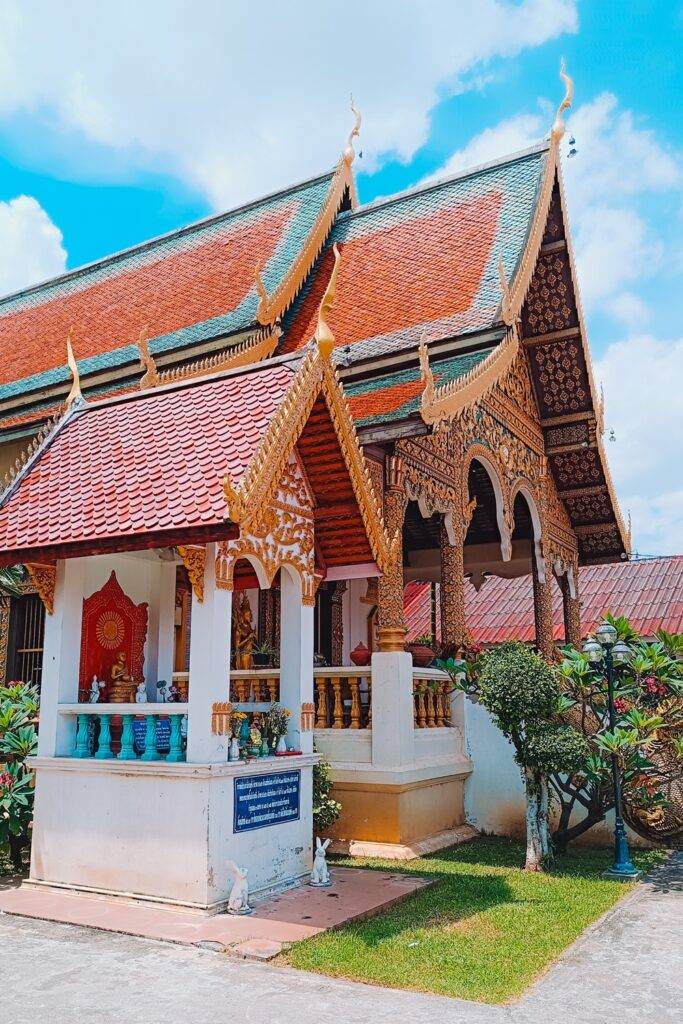

After the bustle of Bangkok, Chiang Mai felt like the perfect change of pace — cooler, slower, and surrounded by nature. We spent three full days soaking up the mix of old temples, lush mountains, jungle hikes, and night markets, and left feeling like we only scratched the surface.
Here’s a breakdown of what we did — and a few suggestions if you have more time in the area.
Day 1 – Arrival, Doi Suthep & Night Market Wandering
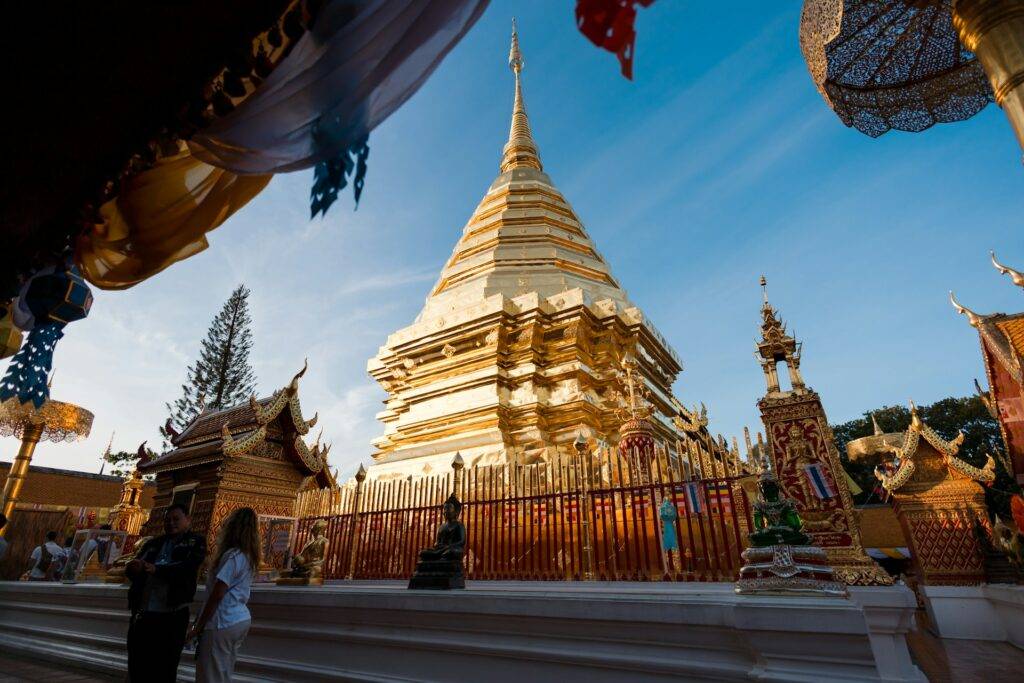
We arrived in Chiang Mai in the afternoon and headed straight to one of the city’s most iconic spots: Wat Phra That Doi Suthep. Perched on a mountain overlooking the city, the temple is especially beautiful at sunset. The golden chedi glows in the fading light, and if the skies are clear, you’ll get an incredible view of the valley below.
In the evening, we wandered through Chiang Mai Night Bazaar — full of street food, handmade crafts, souvenirs, and snacks. It’s the perfect place to grab dinner and get a first feel for the city.
Have More Time? If you arrive earlier or are planning a full day in the area, consider:
Hiking the Monk’s Trail to Wat Pha Lat — a peaceful forest temple that feels like a secret — then continue on to reach Wat Phra That Doi Suthep.
Renting a scooter or hiring a tuk-tuk to explore the mountain sights beyond Doi Suthep:
- Huay Keaw Waterfall (great for a quick stop)
- The peaceful Huai Kaeo Arboretum
- Khun Chang Khian village (famous for its pink blossoms in January)
- Mae Sa Waterfall
- The beautifully landscaped Queen Sirikit Botanic Garden
Alternatively, you could also head to the Mae Kachan Hot Spring and/or the Buatong Waterfall, also known as the Sticky Waterfall.
Day 2 – Exploring the Old City on Foot
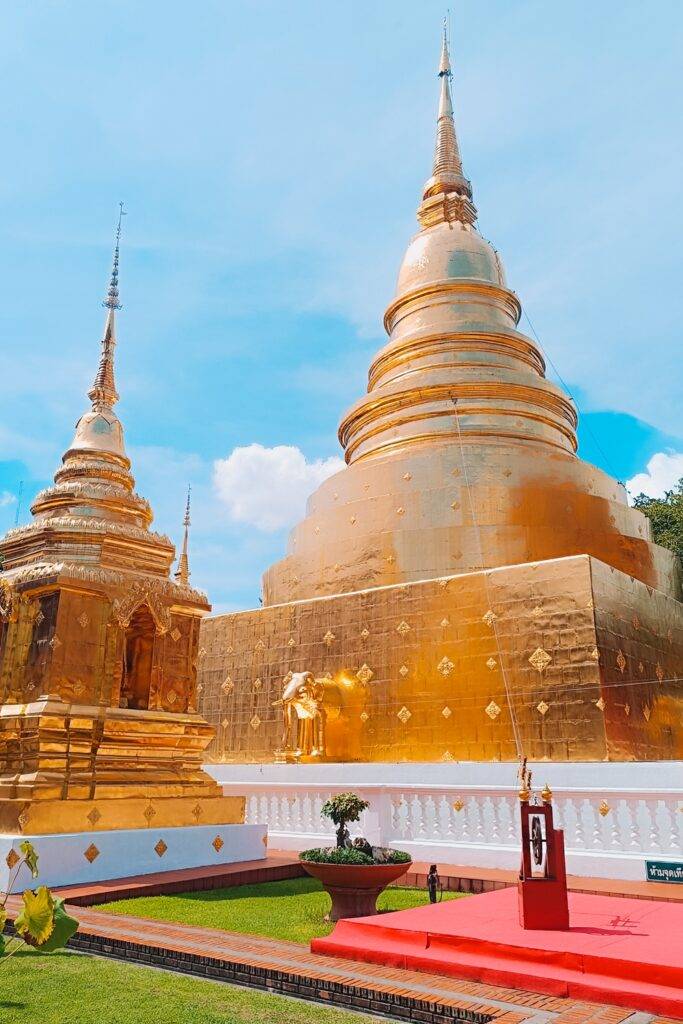


We spent our second day walking around Chiang Mai’s Old City, which is compact and easy to explore on foot. There are temples on nearly every corner, each with its own character. A few highlights:
- Wat Phra Singh — with its golden stupa and detailed murals
- Wat Chedi Luang — known for its massive ruined chedi and serene atmosphere
- Wat Chiang Man — the oldest temple in the city
A bit outside the city, Wat Umong is also worth checking out. It’s known for its intricate network of tunnels. Wat Phrathat Doi Kham (also outside the city) is another popular temple to visit if you have the time.



In between temples, we browsed local markets (I recommend checking out Warorot Market), picked up fresh juice, and stopped at quirky spots like the Lost Book Shop, which lives up to its name with a maze of used books in every language. We took a lot of coffee breaks to cool off a bit.
You should also be able to add a Thai massage or a Thai cooking class to your day.
Day 3 – Day Trip to Doi Inthanon National Park



For our final day, we booked a guided tour to Doi Inthanon National Park, home to Thailand’s highest peak. We shopped around in town, but quickly realized they all sell the same tour at the same price. You can haggle a bit.
The day was packed, but one of the best of our trip.
We started with a stop at the stunning Wachirathan Waterfall, then hiked through the jungle with a local guide, stopping at waterfalls and viewpoints.
The trail led us to green paddy fields and to a small Karen village, where we tasted local tea and had a simple (but delicious) lunch.
In the afternoon, we visited the Royal Pagodas — two elegant stupas built for the King and Queen, surrounded by manicured gardens and mountain views.
On the way back to Chiang Mai, we made a final stop at a local market, perfect for snacks and souvenirs.



Travel Tips for Visiting Chiang Mai
Getting There & Around
- Flights from Bangkok to Chiang Mai are frequent and cheap — around 1.5 hours.
- Once in Chiang Mai, tuk tuks and songthaews (red shared trucks) are the easiest way to get around if you’re not walking.
- For exploring the mountains or waterfalls, consider renting a scooter (only if you’re experienced!) or booking a local tour.
Where to Stay
- Inside the Old City is ideal for first-timers — easy access to temples, cafés, and markets.
- Nimmanhaemin (Nimman) area is trendier and great for longer stays, with boutique hotels, coworking cafés, and restaurants.
What to Pack
- Comfortable walking shoes – you’ll be walking on uneven temple stones and hiking trails.
- A light jacket or sweater – evenings can be cool, especially in the dry season.
- Modest clothing for temples – shoulders and knees should be covered.
- Bug spray and sunscreen, especially for day trips and hikes.
Good to Know
- Temples are free or inexpensive, but donations are appreciated.
- Chiang Mai has a strong coffee scene, with local beans and scenic cafés — worth seeking out.
- Night markets happen almost every day, but the Sunday Night Market is the biggest.
- If you plan to rent a scooter, bring your international driving permit and wear a helmet (check if your travel insurance covers scooter rentals).
Where to Eat in Chiang Mai + What to Try



Chiang Mai is a foodie paradise, especially if you want to dive into Northern Thai cuisine. The flavors here are often earthier, spicier, and herbier than central Thai dishes — and totally worth seeking out.
Must-Try Northern Thai Dishes
- Khao Soi – A rich, creamy coconut curry noodle soup topped with crispy noodles. The ultimate Chiang Mai dish.
- Sai Ua – Northern Thai herb sausage, usually grilled and sliced.
- Nam Prik Ong – A chili-tomato pork dip served with fresh vegetables.
- Gaeng Hang Lay – A Northern-style pork belly curry with Burmese influence (not spicy, slightly sweet).
- Khao Niaow (Sticky Rice) – Often eaten with grilled meats or mango for dessert.
Local Favorites to Eat At
- Khao Soi Khun Yai – A beloved street-side spot for classic Khao Soi. Popular with locals and visitors alike.
- Huen Phen – Great for a traditional Northern Thai meal in a charming, antiques-filled house.
- Tong Tem Toh (in Nimman) – A trendy spot offering great versions of Northern dishes like Gaeng Hang Lay and Nam Prik.
- SP Chicken – Famous for juicy rotisserie chicken and sticky rice. A local institution.
- Chang Phueak Night Market (North Gate) – Come here after dark for a plate of crispy pork from the cowboy-hat-wearing auntie (yes, really!).
Bonus: Chiang Mai Café Culture
Chiang Mai is packed with excellent coffee shops, especially in the Nimmanhaemin area and around the Old City. Look for:
- Graph Café – Local beans, creative drinks.
- Ristr8to – Known for award-winning latte art and strong Aussie-style brews.
- The Barn: Eatery Design – Coffee with a view and a relaxed vibe.
Save on Pinterest for later:
